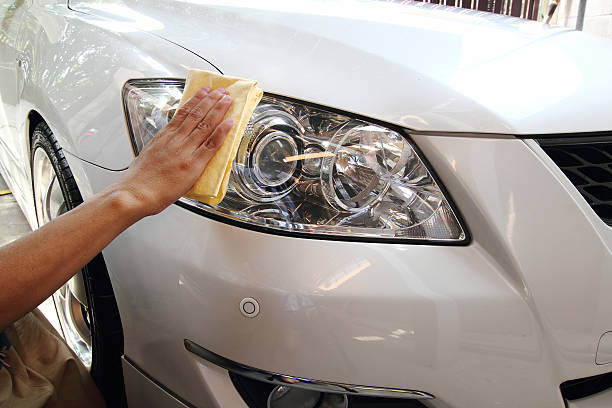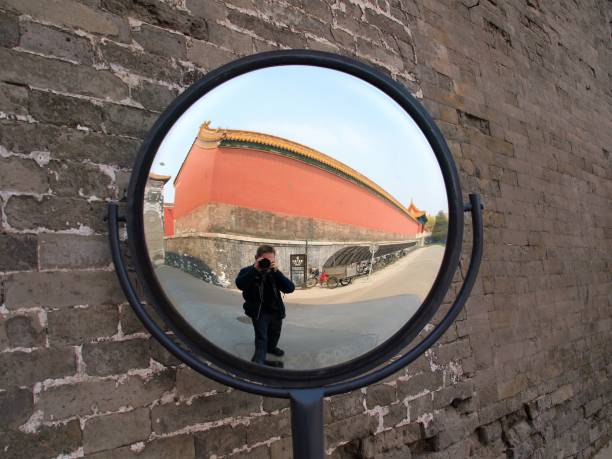A mirror can be defined as a piece of shiny material that obeys the rule of reflection. There are three types of mirrors; a plain mirror, a convex mirror, and a concave mirror. In this article, we are going to discuss concave mirrors. A c0oncave mirror is a spherical mirror that has its surfaces curved inwards. In this type of mirror, the beams of light are focused and reflected at one point, known as the point of focus. There are numerous uses of concave mirrors in different fields. Below are some of the uses of concave mirrors:
1. Shaving mirrors
One of the greatest applications of concave mirrors is in the shaving industry. Most barbers rely on this type of mirror while executing their shaving task because of their ability to form erect and magnified images. When used for shaving, these mirrors are held closer to the head being shaved; thus, the head is reflected in the mirror. In addition, the curved nature of the mirror promotes the production of upright images.
2. Car Headlights
Concave mirrors have an extensive application in the vehicle industry. The car headlights use a concave mirror because of their reflective abilities. The car light is positioned at the focus point, and the concave mirror surrounds the light source. The mirrors reflect the light rays in a parallel direction, increasing the distance covered by the rays.

3. In Telescope
A concave mirror has a huge impact on the astronomy field. Concave mirrors have reflective properties that make them useful in making telescopes. When used in Telescope, concave mirrors allow reflection and focusing. These two properties are vital in studying astronomy components.
4. Makeup mirrors
Concave mirrors are slightly curved inwards, and because of this are make good makeup mirrors. The makeup mirrors made from this type of concave mirror can produce erect and enlarged images. Therefore, when the mirror is held close to the face, an enlarged image of the face or skin is produced, which helps fix makeup issues.
5. Dental Mirrors
Dental mirrors are used by dentists while performing dental checkups. Concave materials play a vital role in producing dental mirrors that can be used in viewing the mouth’s interior. The mirror is rich in reflective properties, allowing the dentist to examine the teeth.

6. Making Microscopes
The condenser of the microscope is made from concave mirror material. When used in this field, the concave mirror concentrates the light beam around, ensuring the object is seen. In addition, the curved nature of the mirrors cuts out other surrounding objects.
7. Medical instruments
Most viewing mirrors used in the medical sector are the product of concave mirrors. The type of mirror used in the medical sector should have reflective, enlarging, and focusing properties. Concave mirrors have three properties, and thus, it fits in making medical instruments. For example, an ophthalmologist uses a concave mirror to examine the patient’s eye. The objects of the interior body being examined are illuminated, and the rays are viewed behind the concave mirror. In addition, when an interior part of the body is viewed using this type of mirror, the image produced is erect and enlarged.
8. In Aircraft
A concave mirror is used to ease the landing of Aircraft. Airplanes and other airborne components have a concave mirror that guides the pilot while landing. The mirror helps the pilot to approximate the distance between the plane and the ground, and thus helps the Aircraft to land safely. Similarly, most mirrors inside the Aircraft are made of a concave mirrors.
9. Vehicle Industry
Concave mirror is a crucial component in the Vehicle industry. Besides manufacturing car headlights, numerous other applications exist for this type of mirror. Firstly, the side mirrors of vehicles are made of a concave mirror. This type of mirror produces erect images, allowing the user to approximate the distance of objects. Secondly, another lighting in the car is made of a concave mirror because it allows reflection and focusing of a light beam.
10. Solar Ovens and Furnaces
The focusing property is crucial in focusing light and heat from the sunlight. In solar furnaces, the sunlight heat is focused and collected using concave mirrors. The collected heat energy is used for cooking and performing other heating tasks. In addition, the solar panels are made up of concave mirrors, which focus the heat energy.

11. Making torches and flashlights
A concave mirror has the effect of reflecting light rays in a parallel direction. When used in flashlights and torches, the concave mirror reflects the beam of light and produces parallel rays that are brighter and cover a wider and larger area.
12. Making searchlights
Searchlights are light source that projects or reflects a beam of light in any direction. A searchlight is not complete without a concave mirror. The concave mirror in the light helps focus and reflect the light beam. In addition, the mirrors help in projecting light in a larger area.
13. Making Ophthalmoscope
Most of the tools and mirrors used in the optical sector are made of a concave mirror. The Ophthalmoscope, an optical instrument, is a good example of an optical product that uses a concave mirror. The product has a concave mirror that has a hole at the center. The small hole at the center is used for focusing while examining the eyes. This tool directs the beam of light to the eyes, and the optician examines the eye through the hole in the concave mirror.
14. Satellite dishes
The focusing property of the concave mirror is useful when making satellite dishes. The mirror focuses and emerges the satellite waves from the satellite. Similarly, the concave mirror technology can be applied while transmitting satellite signals to a larger and wider area.
15. Making Reflectors
Reflectors are polished surfaces that reflect light. Concave mirrors are the primary raw material for making reflectors because of their reflective properties.




